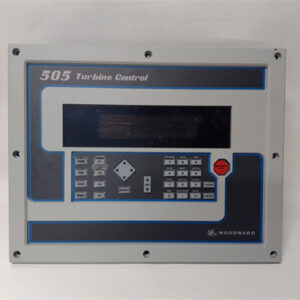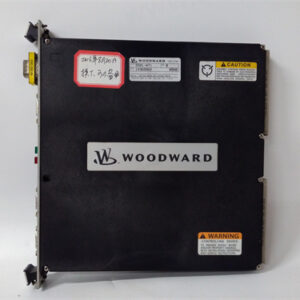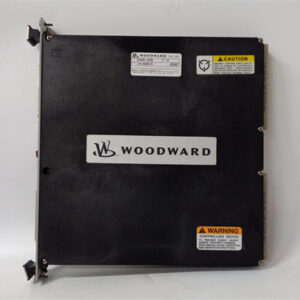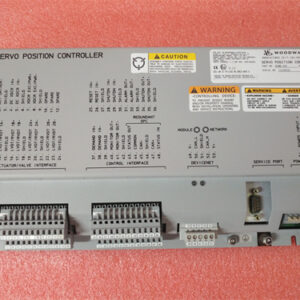الوصف
The Woodward 8407-515 is a specific part number for a TecJet™ 110 Gaseous Fuel Metering Valve. This is an integrated, digitally-compensated control valve and actuator system designed for precise fuel flow regulation in larger natural gas and dual-fuel engines.
WOODWARD 8407-515: TecJet™ 110 Gaseous Fuel Metering Valve (Older Generation / Inactivated)
The Woodward 8407-515 is a sophisticated, all-in-one component that combines a fuel valve and its electronic actuator. It is part of the TecJet™ 110 series, which is designed for significantly higher flow rates than the TecJet 52 series. It’s known for its accuracy and responsiveness in managing gaseous fuel delivery to large engines and even gas turbines. This particular part number belongs to an older generation (likely non-RoHS compliant) of TecJet valves.
Product Overview
- Product Type: Gaseous Fuel Metering Valve / Integrated Valve and Actuator
- Manufacturer: Woodward
- Series: TecJet™ 110 (The “110” signifies a larger valve size, capable of handling higher fuel flow than the TecJet 50 Plus or TecJet 52 models).
- Function: Precisely controls the mass flow rate of gaseous fuels (such as natural gas, biogas, LPG, or low-BTU specialty gases) to an internal combustion engine or gas turbine. It receives a fuel rate demand signal from a main control system and accurately adjusts its internal valve position to deliver the exact required flow.
- Key Features:
- Integrated Design: Combines the valve and the electronic actuator into a single unit, simplifying installation and wiring while improving reliability.
- Digital Compensation: Features onboard electronics that automatically compensate for variations in gas pressure and temperature. This ensures accurate mass flow metering regardless of fluctuating gas supply conditions, which is crucial for optimal engine performance, efficiency, and emissions control.
- High Response: Engineered for fast and precise adjustments to fuel flow commands, enabling the prime mover to accept large load steps without losing speed.
- Feedback Sensors: Incorporates internal sensors that continuously monitor critical parameters such as fuel pressure, temperature, and valve pressure differential. This data is used for internal control loops and can be communicated to the main engine/turbine controller.
- Valve Size: The “110” in TecJet 110 indicates a nominal valve size of 110 mm (DN100).
- Input Voltage Range: Typically 18–32 Vdc.
- Temperature Ratings:
- Operating Temperature: -40°F to +150°F (-40°C to +65°C)
- Storage Temperature: -40°F to +185°F (-40°C to +85°C)
- Communication Protocol: The TecJet 110 valves communicate via CANbus, often using protocols such as CAN J1939, CANopen, or a custom CAN protocol. The 8407-515 specifically has been identified in some contexts as a “TecJet 110 for MTU” or “TecJet 110, GE-J VERSION,” implying it was configured for specific OEM (Original Equipment Manufacturer) protocols or versions of standard protocols.
- Generation Status: This is a non-RoHS compliant version from an older generation of TecJet valves.
Detailed Description
The Woodward TecJet™ 110 valve, including the 8407-515, has been a critical component for large gaseous engines and industrial gas turbines. Its integrated design and digital compensation capabilities provide effective and highly accurate fuel control for these demanding applications.
Key characteristics of the 8407-515:
- High Flow Capacity: Being a TecJet 110, this valve is designed for prime movers that require very high fuel flow rates, making it suitable for large industrial power generation, oil & gas, and marine propulsion systems.
- Precise Fuel Metering: The valve dynamically adjusts fuel flow based on real-time demands. By accurately controlling the fuel quantity, it helps maintain the optimal air/fuel ratio for efficient combustion, minimizing fuel consumption and reducing harmful emissions, even during transient operations.
- Closed-Loop Control: Integrated electronics and sophisticated control algorithms, coupled with internal feedback sensors, allow for precise closed-loop control of fuel delivery. This provides excellent accuracy, stability, and repeatability.
- Robust Construction: Built to endure the demanding conditions of industrial environments, including high levels of vibration and wide operating temperature extremes. It often features improved sealing for better waterproof performance (e.g., UL/CSA Type 4).
Applications
The Woodward 8407-515 TecJet™ 110 valve is applied in various larger engine and industrial turbine systems that run on gaseous fuels:
- Large Natural Gas Engines: Used on high-horsepower engines for power generation (large generator sets), industrial processes, and some marine or rail applications where significant fuel flow is required.
- Gas Turbines: Suitable for small aero-derivative and heavy-duty frame turbines, accurately adjusting gas supply to ensure efficient and stable operation, often in power production or industrial drive scenarios.
- Dual-Fuel Engines: Where large engines switch between or combine liquid and gaseous fuels.
- High-Capacity CHP (Combined Heat and Power) Plants: Ensuring efficient and clean operation of larger gas engines/turbines.
- Major Compressor Stations: For very large gas engines or gas turbines driving compressors in pipeline and industrial processing applications.
Compatibility and Replacement Notes
When dealing with the Woodward 8407-515, it’s crucial to understand its current status:
- Obsolescence: As an older generation, non-RoHS compliant part, the 8407-515 is highly likely inactivated by Woodward. This means direct sales and repair options may be very limited or discontinued.
- Replacement: Woodward typically provides modern Generation II (Gen II) TecJet 110 models as direct replacements for older versions. The specific replacement part number for the 8407-515 would need to be confirmed directly with Woodward or an authorized distributor, as the replacement matrix can be complex for older, OEM-specific parts.
- Backward Compatibility: New Gen II TecJet valves are generally designed to be 100% backward compatible with their older counterparts. This means that if a modern replacement is available, it should function seamlessly without requiring engine recalibration, due to factory flow testing and robust design.
- Protocol Match: While Gen II valves offer flexibility, ensuring the new valve’s communication protocol matches your existing engine/turbine control system is paramount for a successful replacement. The OEM-specific nature of the 8407-515’s protocol means careful verification is needed.



 +86 15340683922
+86 15340683922 +86 15340683922
+86 15340683922


